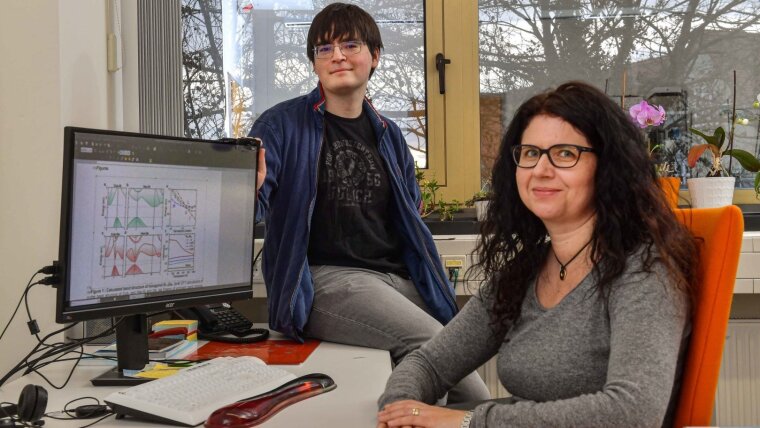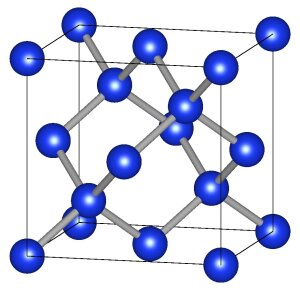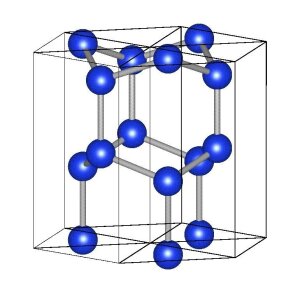
A team of researchers from Eindhoven University of Technology and the University of Jena – and their partners from the University of Linz and the Technical University of Munich – have been awarded the ›Physics World: Breakthrough of the Year 2020‹ award for creating a silicon-based alloy that emits light. Their award-winning work could revolutionize optical data processing in the coming years, as it enables the development of photonic computer chips for the first time.
By Ute Schönfelder
Here is a model representation of silicon’s crystal structure: cubic.
Image: Silvana Botti/Universität JenaThe team, whose members include Jens Renè Suckert and Prof. Dr Silvana Botti from the University of Jena, published a study in April 2020, demonstrating for the first time that silicon alloys are suitable for emitting a significant number of photons. Their findings are paving the way towards silicon lasers that could revolutionize optical data processing. The magazine ›Physics World‹ has been honouring international scientists with the ›Breakthrough of the Year‹ award since 2009.
Prof. Silvana Botti underlines the importance of the development: »Our work enables the creation of silicon-based photonic computer chips that are much faster and more energy-efficient than existing electronic chips«. Such microchips, which communicate with light particles (photons) instead of electrons, need an integrated laser that produces the data signals directly on the chip. However, silicon is a semiconductor material that was previously seen as an extremely weak emitter of light due to the symmetry properties of its electronic energy states. In order to emit photons (i.e. light), the electrons in the semiconductor have to ›jump‹ from an excited state (conduction band) to a lower-energy state (valence band). »In silicon crystals, however, these two bands are offset in such a way that it is difficult for the electrons to pass from one to the other,« explains Jens Renè Suckert, one of the first authors of the award-winning paper. This ›indirect band gap‹ had previously prevented photons from being efficiently emitted by silicon.
Here is a model representation of silicon’s crystal structure: hexagonal.
Image: Silvana Botti/Universität JenaSilicon changes its crystal structure in a nanowire geometry
The team managed to overcome this problem by reconsidering a 50-year-old theory and modifying the silicon’s crystal structure in such a way that the indirect band gap was eliminated. The researchers became the first team to master the growth of silicon with the semiconductor germanium in an alloy with a hexagonal crystal structure (on rhe right) instead of its cubic structure (above), thus facilitating the transition from conduction to valence band. In their paper, which was published in ›Nature‹, the researchers demonstrated that silicon effectively emits light in such a crystal structure.
A team of physicists from the University of Jena contributed to the study by calculating the electronic properties of the silicon-germanium nanowires. »Accurate calculations are essential to prove that the light emission actually comes from the direct band transition within the alloy and to rule out any other sources,« explains Silvana Botti. The calculations were so precise that they even allowed the researchers to predict the efficiency and colour of the light emission depending on the amount of germanium.
Theory enables precise predictions for experiments
»Being recognized for the most important breakthrough in physics research is fantastic and just goes to show how important innovations can emerge from the combination of theoretical and experimental research,« says Silvana Botti, who adds that the recent study demonstrates how experimental physics is enriched by the calculations provided by theoretical physics: »The combination of theory and experimentation can lead to real breakthroughs,« she says.
Original-Publication:
Direct-bandgap emission from hexagonal Ge and SiGe alloys, Nature (2020), DOI: 10.1038/s41586-020-2150-yExternal link

